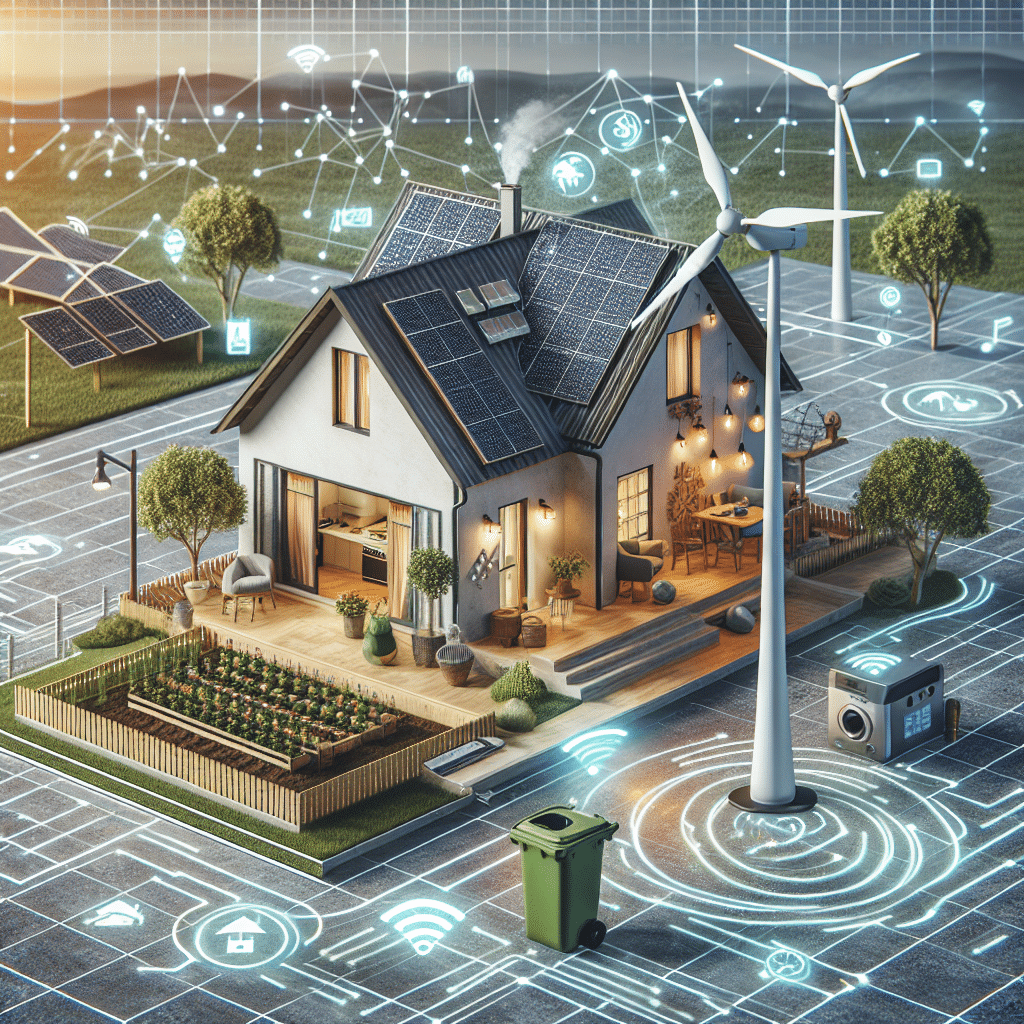Overview of Automated Energy-Saving Routines
Automated energy-saving routines enhance the efficiency of household energy use, reducing both costs and environmental impact. Implementing smart technologies allows homeowners to tailor their energy consumption patterns seamlessly.
Smart Thermostats
Programmable Thermostats
Installing a programmable thermostat is among the first steps to smarter energy management. Set specific temperatures for different times of the day. For instance, lowering the temperature during the night can lead to significant savings on heating costs.
Geofencing Technology
Geofencing smart thermostats adjust the temperature based on your location. When leaving home, the system can automatically reduce heating or cooling, and resume comfortable conditions shortly before you return. This ensures minimal energy use during your absence.
Learning Thermostats
Some high-end models learn your habits over time and adjust accordingly. By optimizing settings based on your family’s schedule, these devices maximize comfort while minimizing costs.
Smart Lighting Solutions
Automated Lighting Systems
Motion sensor lights are ideal for entryways, garages, and bathrooms. By turning off lights when they detect no movement, they prevent energy waste. This kind of automation particularly helps if you have children or forgetful adults at home.
Smart Bulbs
Smart LED bulbs can be integrated into your home network. They can be programmed to turn on or off at specific times or controlled remotely. By utilizing varying brightness settings, you can adjust the ambiance without incurring excessive energy costs.
Control via Voice Commands
Voice-activated assistants enable you to control your lights without needing to find a switch. This feature is especially useful during late-night hours or when your hands are full, allowing you to save energy effortlessly.
Energy-Efficient Appliances
Smart Appliances
Investing in smart appliances that connect to your home automation system can lead to significant savings. These modern gadgets often come with energy-saving modes that operate during off-peak times when electricity rates are lower.
Automated Water Heaters
Automated water heaters can heat water during hours when electricity is cheapest. By employing temperature schedules, these devices heat water only when needed, thus lowering energy consumption.
Monitoring and Analysis
Many smart appliances offer usage analytics. You can monitor which devices use the most energy and make data-driven decisions to optimize usage patterns.
Energy Management Systems
Home Energy Management Systems (HEMS)
Installation of an HEMS provides a comprehensive overview of energy consumption in real-time. By analyzing usage patterns, these systems suggest ways to reduce energy waste and improve efficiency.
Load Shifting Capability
HEMS can help manage loads by shifting energy-intensive tasks to off-peak hours, such as running dishwashers or laundry machines overnight. This saves money and eases the strain on your local energy grid.
Smart Power Strips
Usage Sensors
Smart power strips can detect when devices are not in use. They automatically cut power to devices in standby mode, further curbing unnecessary energy consumption.
Remote Control
These strips often come with app control features, enabling you to turn devices off from your smartphone. Combine this with scheduling options to ensure devices are only powered when truly needed.
Renewable Energy Integration
Solar Energy Systems
Leveraging solar panels not only reduces reliance on conventional electricity but also enhances energy savings. Automated solar panel systems can track the sun’s movement, optimizing energy absorption throughout the day.
Battery Storage
Integrating battery storage systems allows for the capture of excess solar energy for later use. This can significantly decrease energy bills and provide reliable power during outages.
Home Sensors and Monitoring
Energy Sensors
Installing smart energy sensors throughout the home can identify which rooms or devices consume the most energy. This information can guide you in making changes to reduce overall consumption.
Environment Monitoring
Sensors that measure humidity, temperature, and even air quality can help adjust HVAC systems more precisely. Improved accuracy in managing indoor climates results in less energy waste while maintaining comfort.
Smart Landscaping
Irrigation Systems
Automated irrigation systems can regulate water usage based on real-time weather conditions. This not only conserves water but also indirectly saves energy when integrated with electric pumps.
Strategic Planting
Planting trees or shrubs strategically around your home can provide natural shade, reducing cooling costs during the summer. Automated shading systems allow you to adjust blinds or curtains based on sunlight, further enhancing energy savings.
Smart Window Solutions
Automated Blinds and Shades
Smart blinds can open and close based on the time of day or sun position. This helps regulate indoor temperatures without relying excessively on heating or cooling systems.
Energy-Efficient Windows
If you’re considering renovations, energy-efficient windows may be a beneficial investment. Combined with automated blinds, these windows complement your energy-saving strategy through enhanced insulation.
Conclusion: The Future of Home Automation
Incorporating automated energy-saving routines into your home can transform your energy efficiency and overall lifestyle. The use of smart technologies not only reduces utility bills but also raises your home’s comfort level, promoting a more sustainable living. As technology continues to evolve, the potential for increased energy savings will grow, making automation an essential component in modern home management.
